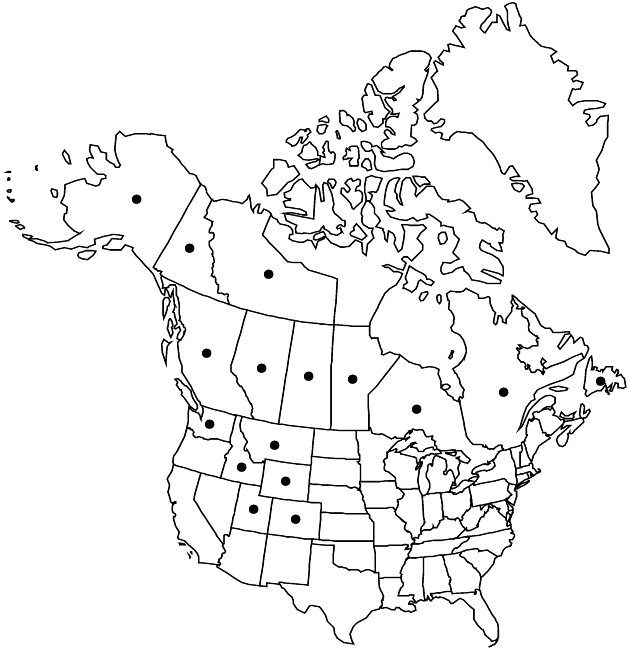Difference between revisions of "Antennaria pulcherrima"
Pittonia 3: 176. 1897.
imported>Volume Importer |
RevisionBot (talk | contribs) m (Bot: Adding category Revised Since Print) |
||
| Line 80: | Line 80: | ||
}}<!-- | }}<!-- | ||
| − | -->[[Category:Treatment]][[Category:Antennaria]] | + | --> |
| + | |||
| + | [[Category:Treatment]] | ||
| + | [[Category:Antennaria]] | ||
| + | [[Category:Revised Since Print]] | ||
Latest revision as of 18:31, 6 November 2020
Dioecious. Plants (8–)30–65 cm (caudices branching or rhizomes stout). Stolons none. Basal leaves 3–5-nerved, spatulate to oblanceolate or lanceolate, 50–200 × 4–25 mm, tips acute, mucronate, faces gray-pubescent or silvery sericeous. Cauline leaves linear, 8–140 mm, distal flagged or not. Heads 3–30 in corymbiform to paniculiform arrays. Involucres: staminate 5–8 mm; pistillate 7–12 mm. Phyllaries distally black, dark brown, light brown, castaneous, or olivaceous. Corollas: staminate 3–5 mm; pistillate 3–6 mm. Cypselae 1–1.5 mm, glabrous; pappi: staminate 4–6 mm; pistillate (5–)8–10 mm. 2n = 28, 56.
Distribution

Alta., B.C., Man., N.W.T., Nfld. and Labr. (Nfld.), Ont., Que., Sask., Yukon, Alaska, Colo., Idaho, Mont., Utah, Wash., Wyo.
Discussion
Subspecies 2 (2 in the flora).
Antennaria pulcherrima is characterized by relatively large basal leaves, rhizomatous growth, and dark-colored phyllaries, each with a relatively large black spot at the base (R. J. Bayer and G. L. Stebbins 1987).
Selected References
None.
Key
| 1 | Cauline leaves: distal usually flagged; corollas: staminate 3.5–5 mm; pistillate 4–6 mm; wet sites, willow thickets, subalpine or subarctic, Colorado to Alaska, e to Ontario, w Quebec | Antennaria pulcherrima subsp. pulcherrima |
| 1 | Cauline leaves: mostly not flagged (sometimes flagged near heads); corollas: staminate 3–4 mm; pistillate 3–4.3 mm; limestone near sea level, w Newfoundland, Anticosti Island | Antennaria pulcherrima subsp. eucosma |